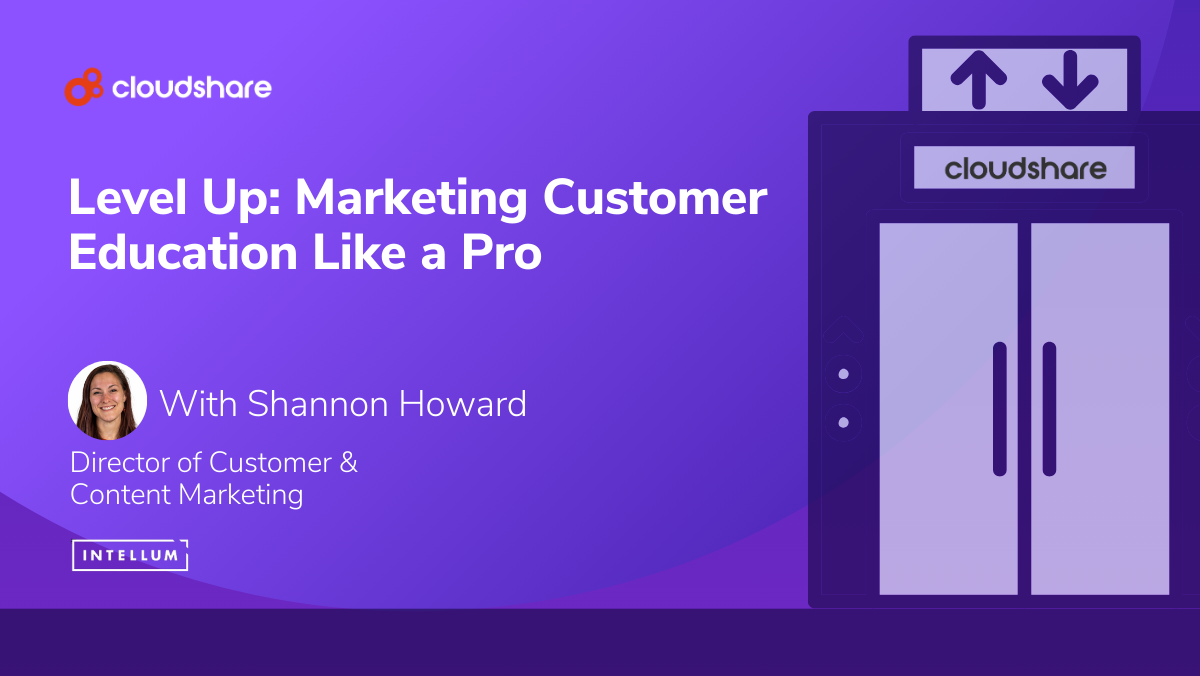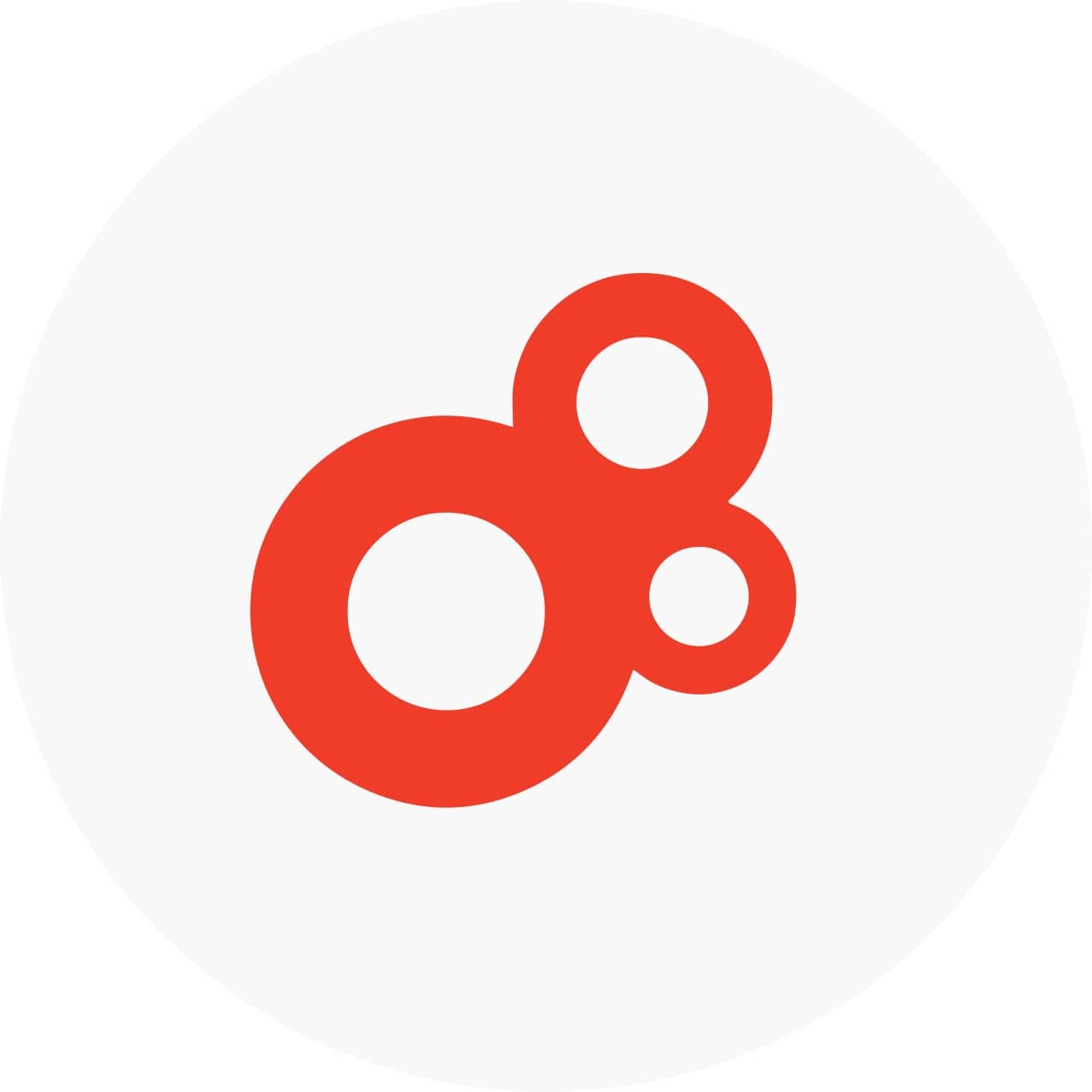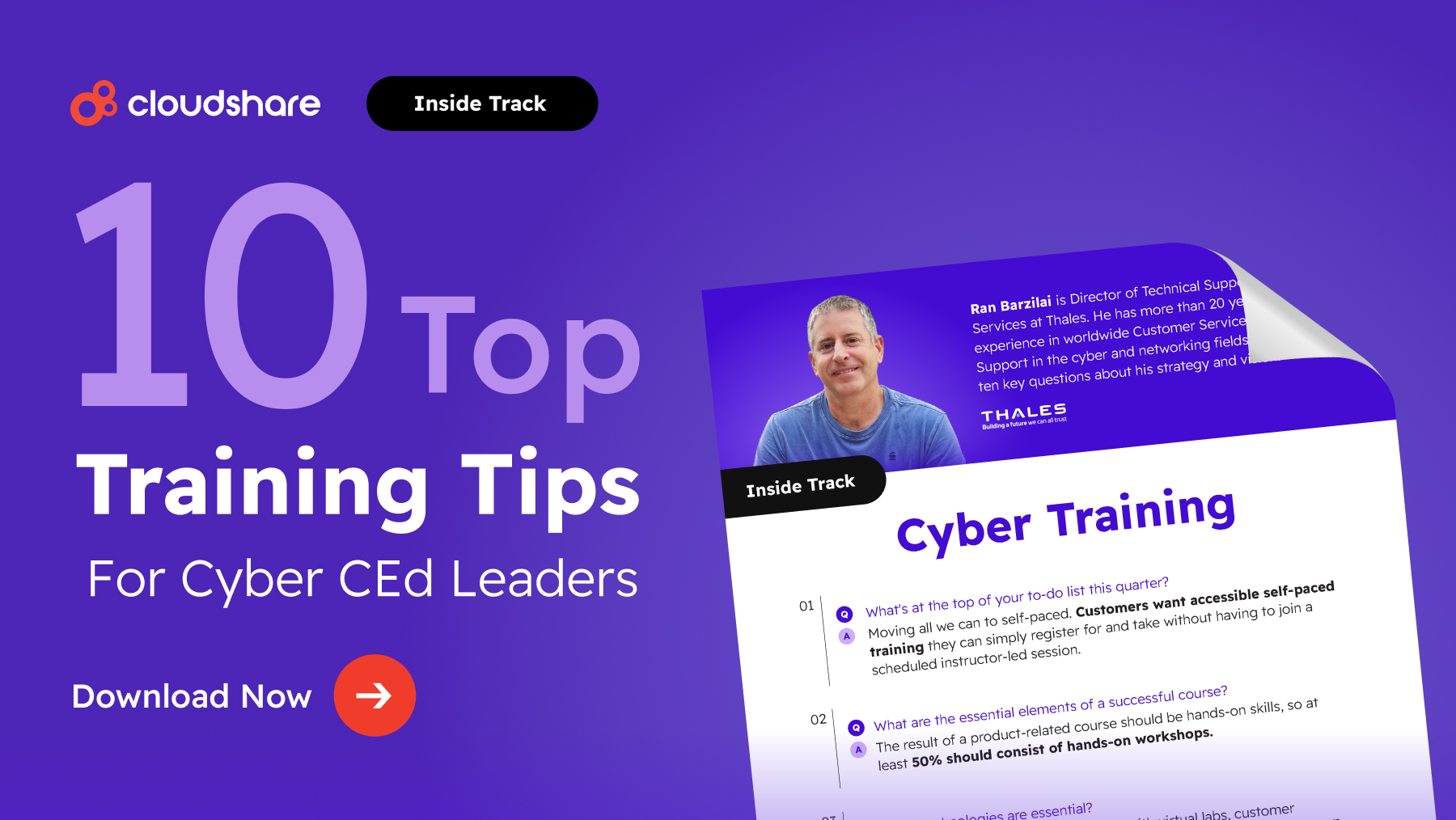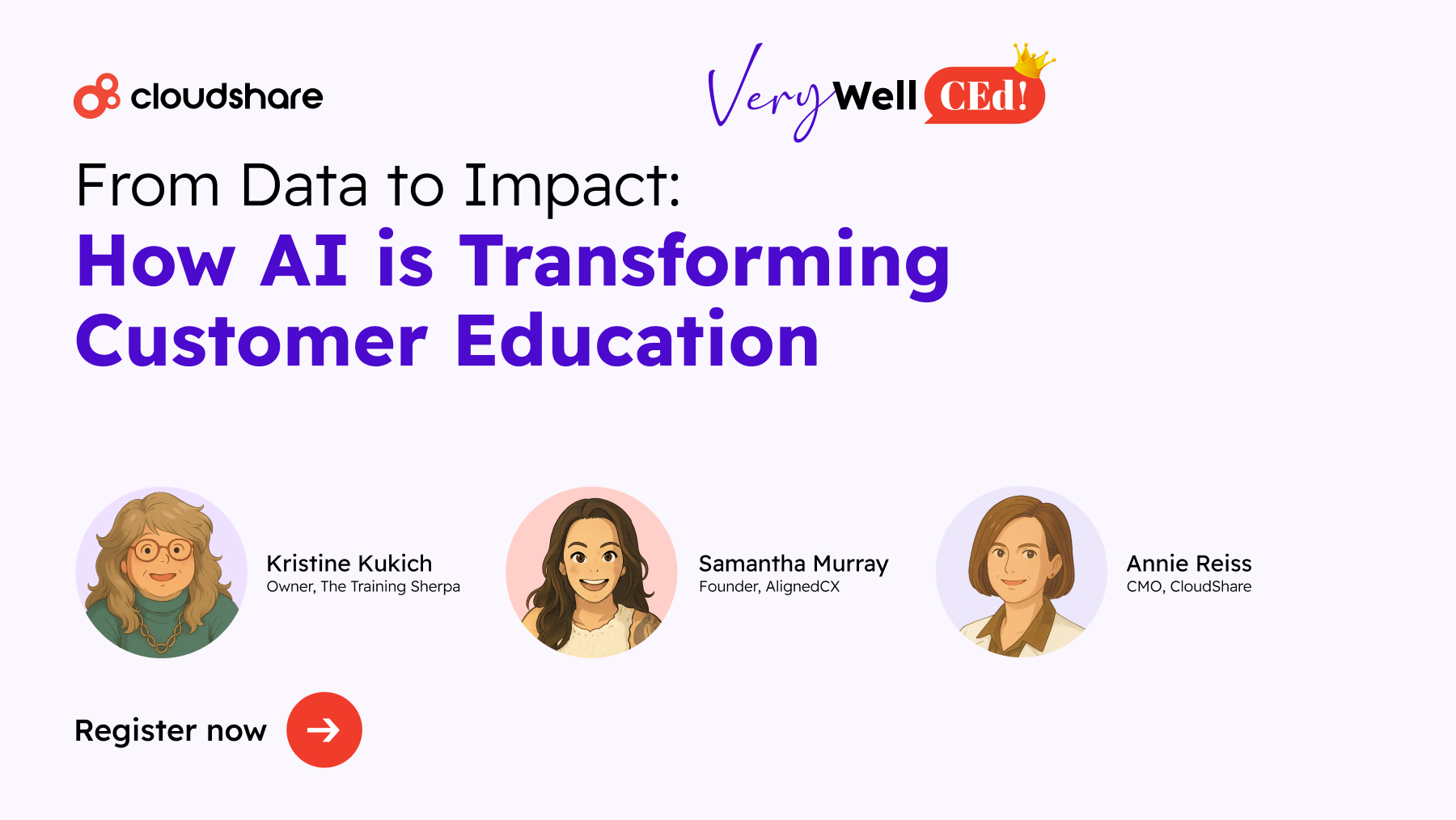
Bouncing ideas around for elevating customer education with Intellum’s marketing mastermind Shannon Howard was crazy fun. She pulls out all the stops when it comes to discussing the mark customer education is now making on the company at large.
“I want every person in the company to know we have an amazing customer education team,” she said. “I call it communicating confidence.” She believes customer education leaders must spread the gospel loud and proud.
Now, pause your notifications for a few minutes and absorb Shannon’s ideas about how to do that—and why it’s vital.
We began by talking about the mindset of the company’s marketers.
Shannon: Most marketing teams are focused on new customer acquisition. Retention tends to be a customer success goal. But even if someone is focused on acquisition, I think it’s important to remember that current customers are a primary driver of new customer acquisition.
Almost every new customer touches an existing customer. And if you have not set them up to be successful, then it doesn’t matter how much great marketing you do, you can’t close a sale. To quote HubSpot: “Our success depends on our customers’ success.”
Most marketers will want to help once they understand how it impacts not just customer retention and customer success, but also new customer acquisition. You have to sell them—and everyone—on the vision of successful customers.
We talked about how customer education should approach marketing to give as well as get.
Shannon: There are a lot of ways you can help them, especially with content. A lot of customer education content can easily become prospect-facing.
Smart content marketers think about repurposing and redistributing their content. They’re taking larger pieces of content and repurposing it into smaller pieces across channels. Your education team is creating content that could be repurposed for marketing so it’s easy to find ways to collaborate and not just say, “Hey, can you promote our customer education?”
Our next topic was about tapping into marketing tools.
Shannon: Your marketing and sales teams usually operate the company’s CRM system, where all of your customer and prospect contact information lives.
Your learning data should be piping into the system so that everybody can see what educational activities people have been participating in and then gauge the impact on customer retention, customer satisfaction, and more.
They’re going to have access to an email service provider (ESP) like Marketo or Pardot, which means you can do deep segmentation and personalization to increase the effectiveness of your email communications.
There’s so much more that you can do that you can’t do within an LMS. The LMS’s primary job is to deliver and track learning, not to send emails.
The marketing department will also own and operate the website and the LinkedIn account. So, they can help you publish and promote education-based things.
We touched briefly on relevant marketing channels, which prompted her to share her fondness for email.
Shannon: I’m a huge fan of email. I know people like to say email is dead, but email gets people to sign up for workshops. Email gets people to sign up for training. It gets people to go to certifications and register for conferences and events.
It is still a top-performing channel because not everybody is logging in all the time. Same with your website. People aren’t necessarily coming to your website all the time. They’re not guaranteed to see things on social media, but if you send an email, it’s more likely than with other channels that they’ll sign up for something.
I asked her if she thinks it’s important to diversify the types of content customer education can offer.
Shannon: You want to consider what is the best way to deliver the learning based on the content and learning objectives.
Some things are best done live and in-person, where people can ask questions and engage. Some are best done in a simulation or a sandbox. Some can be done with just written content. What method of delivery will best support your learning objectives?
You’ll also want to consider your team: Live training, instructional design, and even writing are different skill sets. How is your team currently staffed to support different methods of learning delivery?
Next, I wanted to hear her opinions about packaging educational offers and offering special promotions.
Shannon: Education is the product you’re selling. Whether it’s a paid certification or a free certification, a lot of people are doing this now in conjunction with their customer events.
For example, Atlassian just had their Team ’24 conference and made certifications a part of it by featuring education tracks. A lot of programs have “certification days,” so prospects and customers can earn their badges and such at the events they attend.
Sometimes companies will sell, say, on-demand learning, with access to an expansive library. But then you can add instructor-led training or some customized sessions with a trainer.
We got into the value of user communities (and she went back to talking about content).
Shannon: Your community is going to surface people who might be a great fit for a webinar, blog content, or customer stories.
At Intellum, we built this into our platform with reputation-based gamification. The gamification applies both in learning and in the community so you can identify people who are subject matter experts around a particular skill.
Debbie Smith (president of CEdMA) would say that true customer education is not just product education, it’s putting the product in the context of work. So, if you’re HubSpot, for example, you’re teaching people inbound marketing, email marketing, content marketing, and then how to use their tool to support those things.
Truly great customer education teaches people how to do their job well and then how to use the product to do it.
In these early days of customer education marketing, internal marketing is as valuable, or more, than external marketing. This concept unleashed some great stuff from the star of this interview.
Shannon: In any role that you’re in, but especially customer education, you should be doing internal marketing. And so that looks like grabbing space at your all-hands meeting and talking about what your team is doing, sharing stories.
Internal marketing also includes going to and informing supporting teams. Let’s say your customer success team: they’re the front line with your customer and sometimes the best marketing channel.
Enable internal teams to be able to talk about your education programs. What are office hours, versus live training, versus what’s available on-demand? You might want to create a one-pager that explains each option.
Get into the Slack channels to talk about work that was in progress or any kind of notable achievements. No one is going to think, “Oh, should we invite customer education to this meeting? So, be proactive: “Hey, can I jump in on the next customer success team meeting?”
Sometimes we get a little lazy with our communication, and we’re checking a box more so than actually making sure we have built bridges to other teams. But every company that I’ve worked with, where I’ve built a bridge with sales and customer success, they have been more than happy to share, whether it’s customer marketing or customer education materials.
To build that bridge, you have to sell the vision. Not just what customer education is, but how critical customer success is to your whole business.
When your customers are successful, they renew, they buy more, and they tell their friends. If your company isn’t sold, it will be hard to sell the importance of customer education.
This interview kicks off our four-part series on the powerful collaboration between customer education and marketing. If you’re ready for the next one, click here to continue.
Shannon joins a cast of industry experts in our insightful eBook, “The Customer Education Elevator: Take Your Programs to New Heights with Strategic Marketing“.




